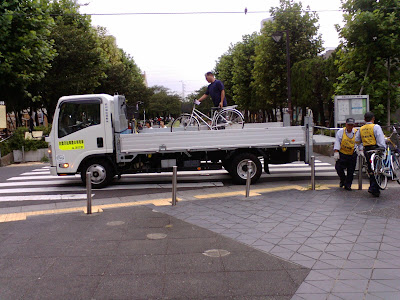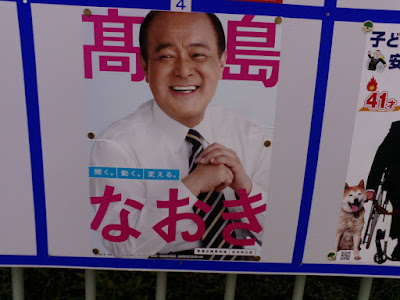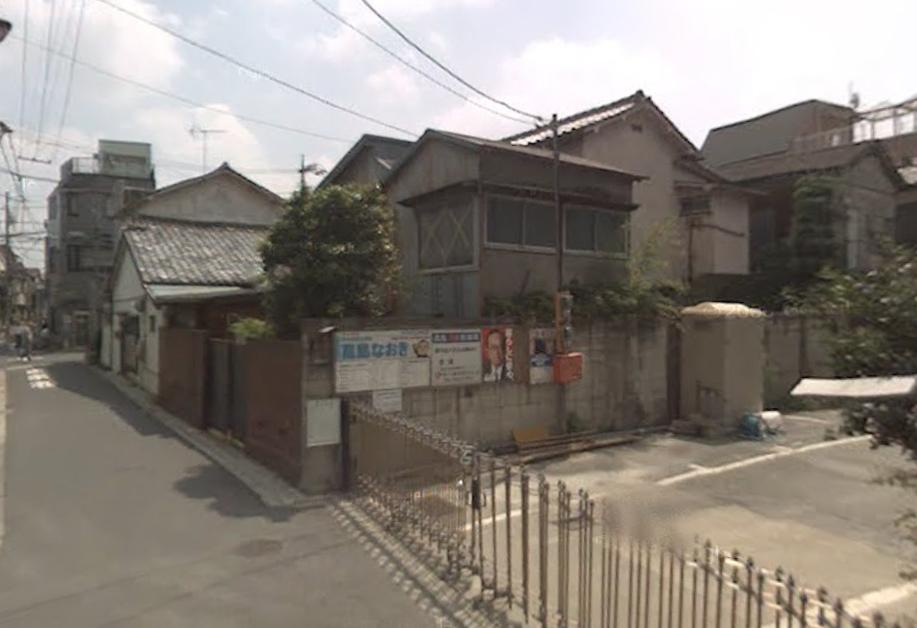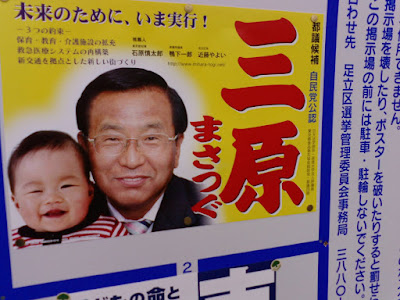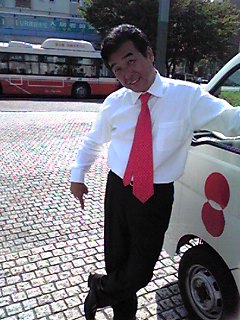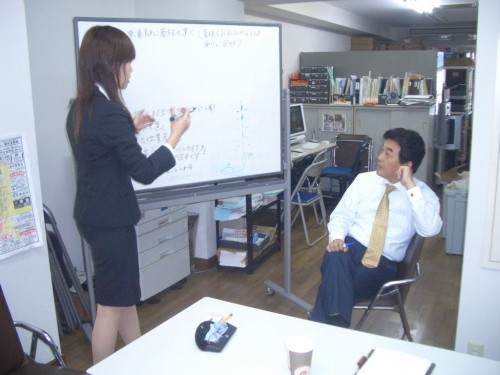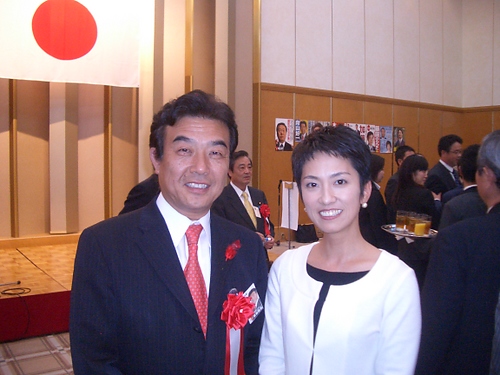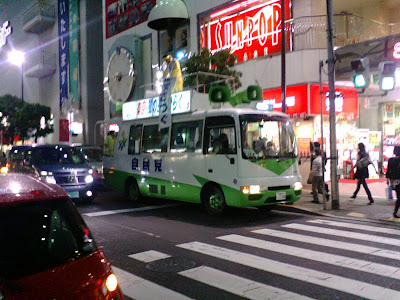In my last post about bicycle parking, I noted that the enforcers didn’t seem to be making much of an impact on illegal bike parking, except maybe at the margins (I’d be tempted to park there more often if I didn’t have a reliable space at my apt. building).
Another rule in Adachi-ku that’s only effective at the margins is the ban on smoking on the streets. In a reverse of the common American rule, in Japan smokers are often allowed to smoke in designated areas of public buildings but banned from smoking on the street. This makes for some smoky izakaya, but to me it makes sense because Japan’s narrow streets and urban lifestyle mean you are affected more by street smokers than you would be in a big American city.
Unfortunately, the bans tend to be ignored by whoever is insensitive enough to light up. They obviously know it’s against the rules but wear a “screw you” scowl on their faces and no one does anything.
One effort to combat these scowlers has been to enhance enforcement in high-traffic areas by dispatching workers who enforce the rules by collecting small fines on the spot. Adachi-ku has imposed such a ban since October 2006 starting with a 1,000 yen fine in the Kitasenju Station area. Ever since I have been in the area I have seen elderly people (volunteers I presume) asking some very surprised and incredulous smokers to pay 1,000 yen on the spot.
Similar exchanges are expected to come to my neighborhood this October as the fine is set to be expanded to include the Ayase Station area:
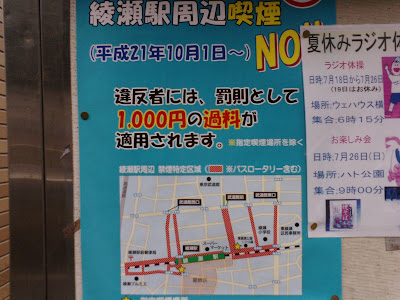 |
| From Adachi-ku bicycle parking enforcers |
The details of anti-smoking ordinances vary from place to place, but most appear to follow similar guidelines – ban smoking on the street everywhere (except some small smoking areas) but only enforce in areas of major foot traffic such as train stations. Many places such as Tokyo’s Chiyoda-ku post their enforcement stats online. Since beginning its policy in November 2002, Chiyoda-ku has fined a total of 42,230 people. Though I could not find figures on whether these people are actually paying the fines, if everyone has paid they have collected a total of 84.5 million yen, which adds up to something like 11.3 million yen a year.We also don’t know how many people the enforcers tried to stop but couldn’t.
For its part, Adachi-ku claims to have issued 3,498 fines in the Kitasenju area. As noted above, the preferred collection method is to demand payment on the spot. Enforcers are required to show proper ID upon request, and you are allowed to appeal if you don’t think you deserve the fine. However, there appears to be nothing the enforcers can do if you simply ignore them or refuse to take possession of the ticket.
In the initial period of enforcement, Ayase can probably expect a similar reaction that was documented when Kobe expanded its enforcement in 2007 – refusals by people who claim ignorance of the rule, people tossing out cigarettes just before entering the restricted area, and lots of people simply refusing to acknowledge the existence of the enforcers. Seeing the jerks who light up even when they know the smoke bothers everyone is one of my pet peeves, so here’s hoping our friends the elderly enforcers can get the job done.

